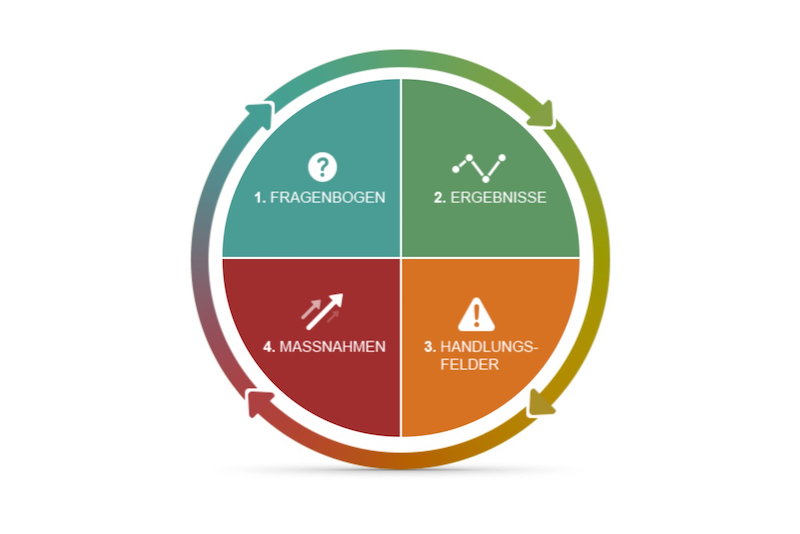As part of the pilot for the Toolkit: Women & Diversity in Innovation, one of Merkle’s goals is to optimize its internal “calibration process”, which incorporates objective performance criteria and multiple perspectives in promotion decisions. The “diversity dashboard” is a monitoring tool that provides transparency on the distribution of key parameters such as part-time work or management responsibility linked to diversity characteristics.
⚒⚒ | $$ | ⏲⏲ | Regular employee surveys are one of the most direct ways to capture qualitative and quantitative performance criteria for diversity and equal opportunity in innovation. Survey findings help HR managers and executives to identify areas of action with the greatest potential for change, allowing them to plan and implement targeted measures based on data.
Küffer Elektro-Technik AG (KETAG) in Kirchberg, near Bern, employs around 35 people, including men and women from different age groups. To assess satisfaction and the need for action regarding internal communication, the company surveyed its employees. The results were presented to the management, which drew up specific measures from the survey findings and passed them on to line managers for implementation.
⚒⚒ | $ | ⏲⏲ | Especially in the innovation sector, equal pay for equal work is a fundamental condition for equal opportunities and for promoting talents. Even for companies with fewer than 100 employees, voluntarily conducting a regular equal pay analysis can make sense to uncover inequalities in the salary structure and to create transparency with respect to wages.
⚒ | $ | ⏲⏲⏲ | All performance and suitability indicators that can be uniformly specified and that are observable/measurable at the personal level can serve as objective promotion criteria. Objective promotion criteria raise the probability that the most qualified individuals will be appointed to expert and responsible roles. They increase the transparency of promotion decisions, resulting in higher acceptance of such decisions and a fairer perception overall.
⚒⚒ | $ | ⏲⏲ | The survey and analysis tool “PRO-EQUALITY” enables organizations of all kinds to ask employees about their perceptions of internal gender equality independently. It can be downloaded for free from the internet and ensures that anyone who participates in the survey remains anonymous.
⚒⚒ | $ | ⏲⏲⏲ | The Swiss LGBTI Label is a seal of quality for companies, organizations, and educational institutions committed to including lesbian, gay, bisexual, trans*, and intersex people in Switzerland. Organizations that carry the Swiss LGBTI label send a clear signal internally and externally to include people whose sexual orientation, gender identity, or gender characteristics differ from most of the population.
⚒ | $ | ⏲⏲ | Wage transparency establishes a common knowledge base on salaries, and supports companies in initiating a meaningful dialogue around wages. In the long term, wage transparency contributes to developing an open culture of discussion, a trusting working atmosphere, and increased employee commitment. In the innovation sector, wage transparency also helps to retain highly qualified specialists and creative talents.








